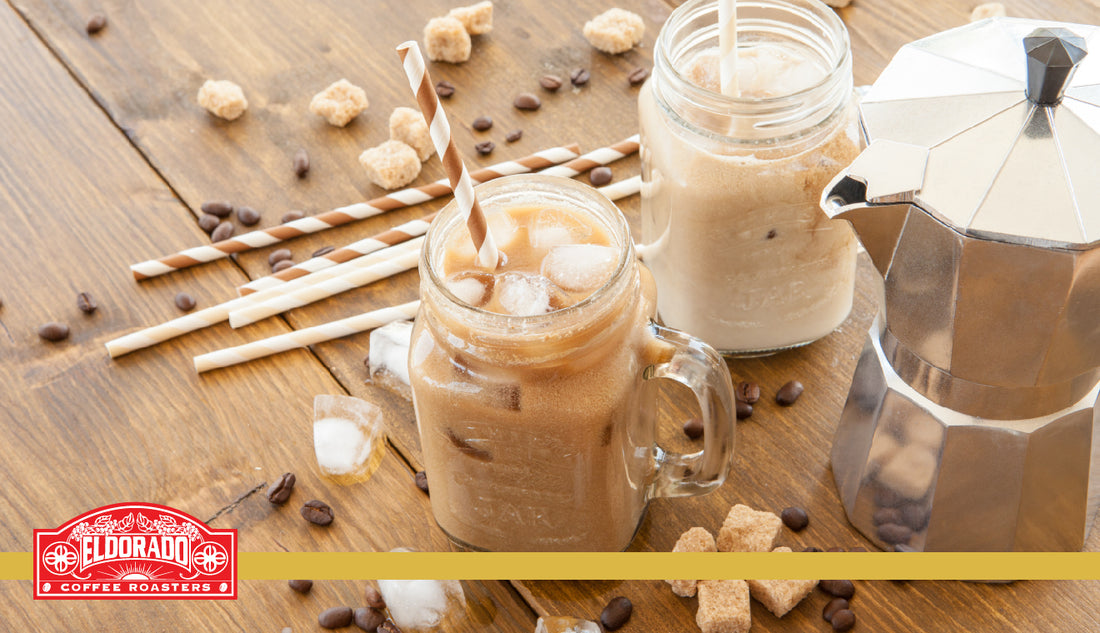
Replacements for Plastic Straws
Share
Many people have recently found themselves under a lot of scrutinies for the number of plastic straws used every single day. With the current state of our planet, and the detrimental impact plastic straws are having on the world's plastic pollution levels, a movement to reduce the amount in the world is starting to unfold.
Activists, environmentalists, and even your everyday consumers are beginning to understand the impact of our collective carbon footprint. Anyone can help fight the rising levels of plastic pollution in our world by being conscious and actively refusing to use plastic straws. You might have heard about the push for banning straws as a way of lowering the rates of plastic pollution because the topic has recently been covered by the media.
The push for less plastic doesn’t mean you have to stop drinking your coffee with a straw altogether in order to help the environment. There are ways that you can continue to reap the benefits of your coffee-loving lifestyle and drink your favorite brew without adding to the world’s plastic pollution levels.
Thankfully, plastic is not the only material that straws can be made out of; if you are in search of an alternative to plastic straws to drink your coffee out of, then you are in luck! Here are seven popular replacements for plastic straws!

1. Glass Straws
Glass straws are an inexpensive replacement for plastic straws, though it is more realistic for coffee drinkers to buy them on an individual level. The likelihood that this straw would break is obviously higher than others, so you should consider this when purchasing.
So if you are someone who enjoys pulling Costadoro arabica espresso shots and making iced lattes for yourself at home, then a glass straw is something worth looking into! Whether you prefer the clear look or ones made from colored stained glass, you can tailor your glass straws to your liking. If you take your iced latte out and about while you run errands, pair your favorite glass straw with a reusable cup to reduce plastic pollution even more.

2. Bamboo Straws
Bamboo straws pair well with coffee, iced tea, and juices of all kinds! The thickness of a bamboo straw is what makes this plastic straw alternative so versatile. Bamboo straws can be used over and over again, but over time, you will notice that they become softer after repeated use.
When you feel that it's time to dispose of a bamboo straw, place the straw into the compost. You can expect the straw to decompose in four to six months. There is quite an abundance of bamboo in the world as it is the fastest growing plant, so by using bamboo straws instead of plastic ones, you are making use of the world's resources rather than contributing to plastic pollution.

3. Papaya Leaf Straws
Although uncommon, papaya leaf straws might just make their way into your local area in due time. These straws take the stems of actual papaya leaves to use as the straw itself.
The one caveat with straws made from fresh papaya leaves is that there must be access to papaya plants, which only grow in tropical climates. If the market for papaya leaf straws starts to expand, then it is likely that businesses will set up shop in tropical parts of the world and start to manufacture straws made from papaya leaves. Until then, papaya leaf straws are a plastic straw replacement to look for whenever you travel to warmer parts of the world.

4. Stainless Steel Straws
Stainless steel straws are undeniably the most popular alternative to plastic straws. The two most popular styles of stainless steel straws are straight and bendy, so you’ll get to choose which style of straw suits you best. Stainless steel straws are environmentally friendly, and they do not contain any carcinogenic chemicals as plastic straws do.
This plastic straw replacement option is perfect for people who take their joe on the go. Since stainless steel straws are so practical, you can use them in place of the plastic straws that you often see at coffee shops and grocery stores. Just make sure to rinse them off after every use to prevent coffee residue from building up on the inside of your straws.

5. Paper Straws
While paper straws aren’t necessarily reusable, they are (sometimes) recyclable! They hold up very well in both hot beverages and iced coffee drinks just as well as, if not better than, plastic straws do.
Paper straws cannot sit in a brewed cup of the Eldorado premium coffee blend forever, but they are designed to Even though paper straws are used once and then recycled.
While paper straws may initially seem less harmful than plastic, there are some pitfalls to them as well. Paper straws are a good choice if you need a softer material for sipping.
6. Straws Made Out of Straw
Also known as a hay straw, drinking straws made out of straw are as real as the name is redundant. Since these straws are made from wheat, they are a light tan color, making it an aesthetic match for your cup of coffee.
These straws are a great option because they are very affordable, so you can buy them in bulk without having to dedicate a large portion of your budget to straws. Straws made from straw are plant-based, and most often, they are organically grown.
7. Go Strawless and Sip from Lids Instead
While there are so many options when it comes to replacing plastic straws, nothing says you have to use straws in the first place. For those of you who can drink without the help of straws, going straw-free is the most waste-free alternative to plastic straws. One way to go strawless is to make a one-time purchase and invest in a reusable tumbler for your coffee. Reusable tumblers are an amazing idea when you are itching for a warm cup of coffee, too, since drinking hot beverages with a straw is not always possible.
Whether you make coffee at home or you stop by your favorite coffee supplier for your caffeine boost, reusable coffee tumblers get rid of straws altogether because you drink from lids instead. Plus, an added bonus is that reusable containers keep coffee warmer, or colder, for longer! A plastic reusable cup is not much better than a plastic straw, so the one important detail to remember when buying a reusable cup is that it should be made from materials other than plastic! Otherwise, the cycle of plastic and pollution continues.
